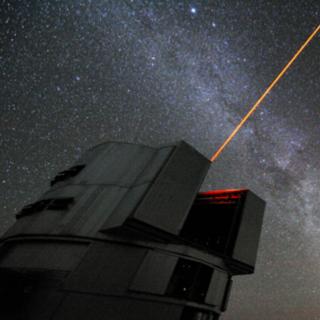Bibcode
Di Criscienzo, M.; Leccia, S.; Braga, V.; Musella, I.; Bono, G.; Dall'Ora, M.; Fiorentino, G.; Marconi, M.; Molinaro, R.; Ripepi, V.; Girardi, L.; Mazzi, A.; Pastorelli, G.; Trabucchi, M.; Matsunaga, N.; Monelli, M.; Saha, A.; Vivas, K. A.; Zanmar Sanchez, R.
Referencia bibliográfica
The Astrophysical Journal Supplement Series
Fecha de publicación:
8
2024
Número de citas
1
Número de citas referidas
1
Descripción
This work is part of VESTALE, a project initiated within the Legacy Survey of Space and Time (LSST) Cadence Strategy Optimization Process. Its goal is to explore the potential of Rubin-LSST observations aimed at the Galactic bulge (henceforth just "Bulge") for studying RR Lyrae (RRL) stars. Observation and analysis of RRL stars in the Bulge are crucial for tracing the old population of the central part of our Galaxy and reconstructing its formation. Based on observations conducted with CTIO/DECam by Saha et al. toward Baade's window, our simulations demonstrate that early Rubin-LSST observations will enable the recovery of RRL light curves (LCs) at Galactic center distances with sufficient precision. This will allow us to utilize theoretical relations from Marconi et al. to determine their distances and/or metallicity, following the REDIME algorithm introduced in Bono et al. We show how reddening and crowding affect our simulations and highlight the importance of considering these effects when deriving pulsation parameters (luminosity amplitudes, mean magnitudes) based on the LCs, especially if the goal is to explore the opposite side of the Bulge through the observation of its RRL. The simulations discussed in this investigation were conducted to support the Survey Cadence Optimization Committee's decision to observe this important sky region since it has only recently been decided to include part of the Bulge as a target within the LSST main survey.
Proyectos relacionados

Evolución Galáctica en el Grupo Local
La formación y evolución de galaxias es un problema fundamental en Astrofísica. Su estudio requiere “viajar atrás en el tiempo”, para lo cual hay dos enfoques complementarios. El mas extendido consiste en analizar las propiedades de las galaxias a diferentes distancias cosmológicas. Nuestro equipo se concentra en el otro enfoque, denominado
Emma
Fernández Alvar